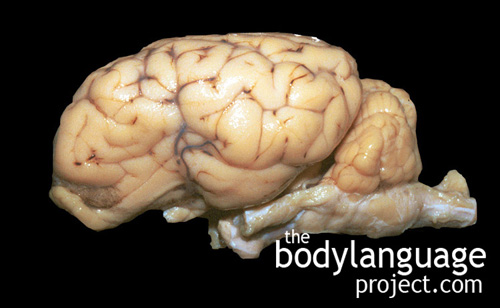
When people “jive,” they are in agreement, and this commonality leads to liking. In this photo we see a couple mirroring each other by drinking in unison.
The discovery of the mirror neuron happened by accident at the University of Parma in Italy by researchers Giacomo Rizzolatti and Vittorio Gallese. They were studying the planning and movement activity in monkey brains and found that a specific set of neurons responded when monkeys grasped a peanut while other neurons altogether fired when they ate the peanut. When one of the researchers reached for a peanut to give to the monkey, they observed the monkey’s brain react as if it where the monkey who was reaching for it. They found that the same regions of the monkey’s brain activated whether the action was performed by the monkey or if the action was simply observed by the monkey. The mirror neuron was an important discovery, but one that happened completely by chance.
In follow up studies, the mirror neuron has been directly observed in other primates and even birds. Researchers conclude that it very likely exists in the minds of humans as well. However, the mirror neurons in the human brain are much more difficult to study because isolating single neurons is impossible. In animals, the neuron fires when an animal acts and also when they view another animal act. Studies show us that the neuron therefore fires as if the motion was actually performed, when in reality the movement was merely observed. Similarly, brain scans of human’s show that areas of the brain light up when they view others performing actions. These are the same areas that would light up had the action been performed. Today, it is generally agreed that there is no such single neuron at work, but rather a network of neurons working together making the “mirror neuron” a bit of a misnomer.
The origins of the “mirror neuron” might stem from imitative learning. By observing people performing actions we could pick up skills instead of having to learn the actions all on our own. In other words, mirroring allowed us to learn vicariously which is a much quicker way to learn and also less dangerous. Just imagine having to learn to use a sharp knife or chainsaw having never seen one used, nor what either is capable of doing, either to a tomato or tree trunk. Another possible reason for these class of neurons might be related to empathy and emotion since the neurons might help us connect with others. For example, when we view pictures of people who display happiness, disgust, fear or pain, we react to them as if we had felt it ourselves. This ability to connect with people, even strangers, has an important function in our daily lives since it allows us to build and hold relationships, creates sympathy, and inhibit fighting.
Above: The mirror neuron Part I
Above: The mirror neuron Part II

